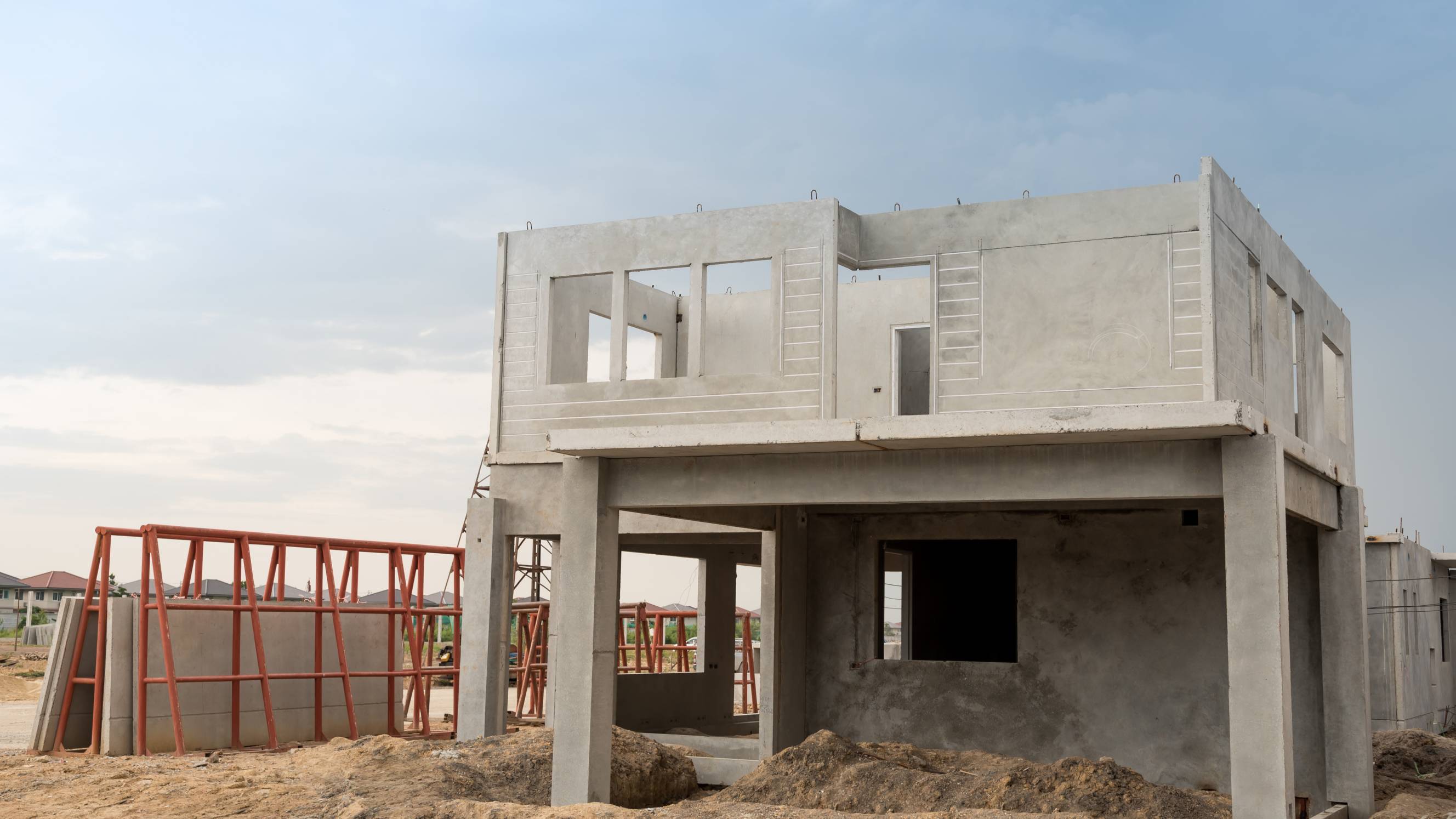
- Home/
- Comparisons/
- Bricklayer/
- Lime Mortar vs Cement Mortar
Lime mortar vs cement mortar: What’s the difference?
Understanding their composition and best uses.
Last Updated on

Written by Daniel H.
Contributor
Read more about our contributor
Key Facts
- Lime mortar is a traditional building material known for its flexibility, breathability, and suitability for restoration projects.
- Cement mortar is a modern building material valued for its strength, durability, and quick-setting properties.
Imagine starting a renovation or new construction project, only to find yourself stuck on a crucial decision: lime mortar vs cement mortar. This choice isn’t just about materials, it can affect your structure’s appearance, durability, and even environmental impact.
In this guide, we’ll compare these two popular options and analyze their unique strengths and uses to help you make an informed decision. Whether you’re restoring a historic property or building something brand new, we’ll provide the insights you need to choose the right mortar for your project.
What is lime mortar?
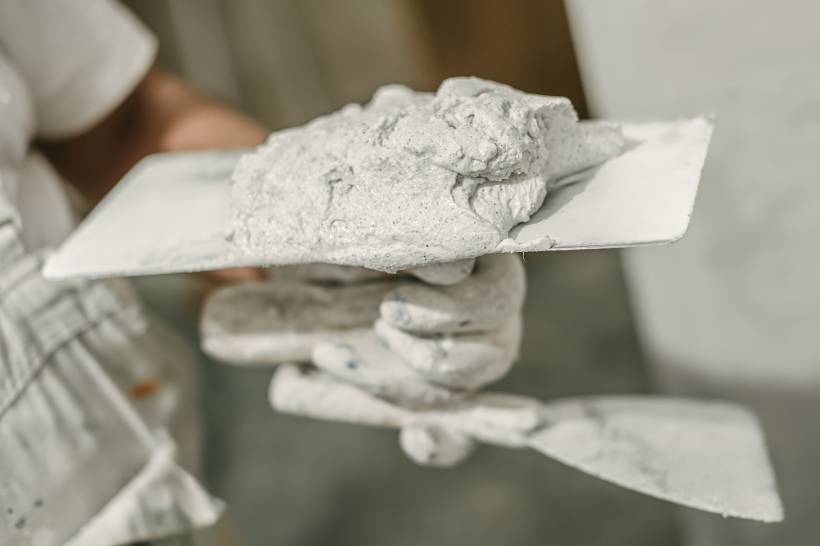 Close-up of fresh cement. (Source: iStock)
Close-up of fresh cement. (Source: iStock)
Lime mortar is a traditional building material made from a mix of lime, lime sand, and water. It has been commonly used in construction and restoration for centuries. Unlike cement mortar, it’s flexible and breathable, which helps moisture evaporate, preventing trapped water and damage to structures.
This mortar takes longer to cure and has lower initial compressive strength, but it strengthens over time, which makes it ideal for older buildings. Its eco-friendly production and suitability for restoration work make it a popular choice for conserving historic structures while maintaining structural breathability.
What is cement mortar?
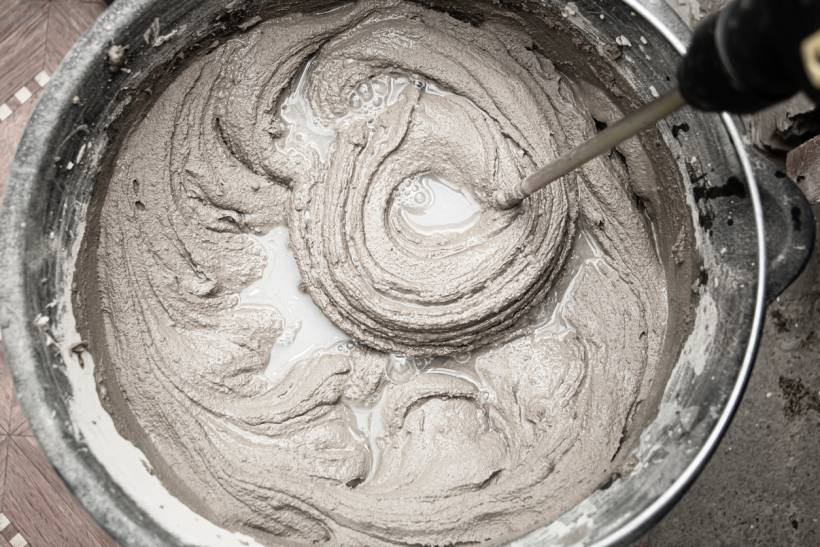 Mixing grey cement. (Source: iStock)
Mixing grey cement. (Source: iStock)
Cement mortar is a modern building material made from cement, sand, and water. It’s known for its strength and fast-setting properties. Unlike traditional materials, cement-based mortar is non-breathable and inflexible, which can trap moisture in older buildings, but works perfectly for modern construction needs.
It’s strong, durable, and water-resistant, which makes it ideal for binding bricks, plastering, rendering, and flooring bases. Thanks to the quick curing time of modern cement, this mortar is a go-to choice for projects requiring efficiency and reliability.
Did you know: Lime and cement can be mixed together to combine the benefits of both materials—lime provides flexibility, breathability, and durability, while cement offers strength and faster setting times. This practice is common in projects where a balance between workability and structural integrity is required.
Cement mortar vs lime mortar: Which is the best choice for your project?
Choosing between types of mortar in construction depends on the project and the structure's specific needs. To understand the difference between mortar and cement, this comparison will break down factors like strength, flexibility, environmental impact, and more.
In terms of strength
 Hand in work glove laying a red brick. (Source: iStock)
Hand in work glove laying a red brick. (Source: iStock)
Lime mortar is generally weaker in compressive strength but offers flexibility and long-term performance for specific applications. It strengthens gradually over time, which makes it a good option for non-load-bearing walls or structures involved in house renovation projects. Its ability to expand and contract with natural movement prevents cracks, particularly in older buildings.
In contrast, cement mortar provides significantly higher compressive strength and is designed for modern, load-bearing applications. It sets quickly and can withstand heavy loads, which makes it suitable for foundations or reinforced elements managed by a general contractor or a contractor during large-scale builds.
In terms of flexibility
Lime mortar is highly flexible, allowing it to expand and contract with changes in temperature or slight structural shifts. This makes it ideal for older buildings where materials naturally move over time. Additionally, its self-healing property allows minor cracks to fill naturally through re-carbonation, which helps preserve a structure’s integrity and reduces long-term brick cleaning costs.
In contrast, cement mortar is rigid and less forgiving under stress, often leading to cracks if the structure shifts. These cracks are permanent and require repair, which increases maintenance efforts. While suitable for modern constructions with dense materials, its inflexibility makes it less compatible with historic buildings or porous masonry, where flexibility is key for structural health.
In terms of breathability
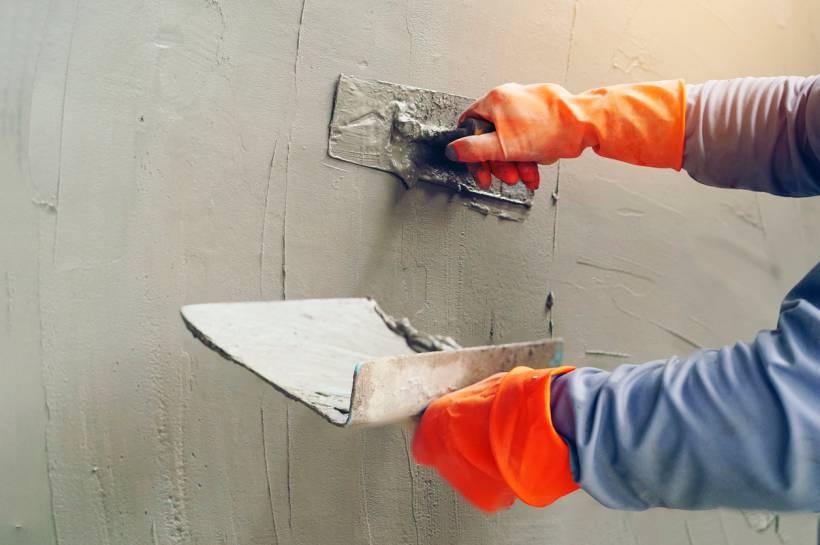 Spreading cement mixture on a surface. (Source: iStock)
Spreading cement mixture on a surface. (Source: iStock)
Lime mortar is highly breathable, which lets moisture pass through and evaporate naturally. This feature makes it ideal for masonry buildings with solid walls, as it prevents dampness, efflorescence, and water pressure buildup. By balancing moisture movement, lime mortar protects softer or porous materials from stress and degradation.
In contrast, cement mortar creates a non-porous barrier, trapping moisture within walls. This lack of breathability can cause rising dampness, freeze-thaw damage, and cracks in permeable masonry. While suitable for modern construction with waterproofing needs, it’s less compatible with older structures that require natural moisture management.
In terms of setting time
Lime mortar takes significantly longer to set, often requiring several days or even weeks for the initial setting. This slow process, driven by carbonation, allows flexibility during application, which makes it ideal for restoration projects or traditional builds where adjustments are needed. However, the extended curing time means it’s better suited for projects where timelines are less critical.
On the other hand, cement mortar sets quickly, typically within a few hours to a day, thanks to the hydration process of modern cement. This rapid setting time makes it essential for fast-paced projects, which provides structural stability early in construction. It’s particularly valuable for modern applications like commercial builds or plastering and skimming work, where efficiency is key.
In terms of construction applications
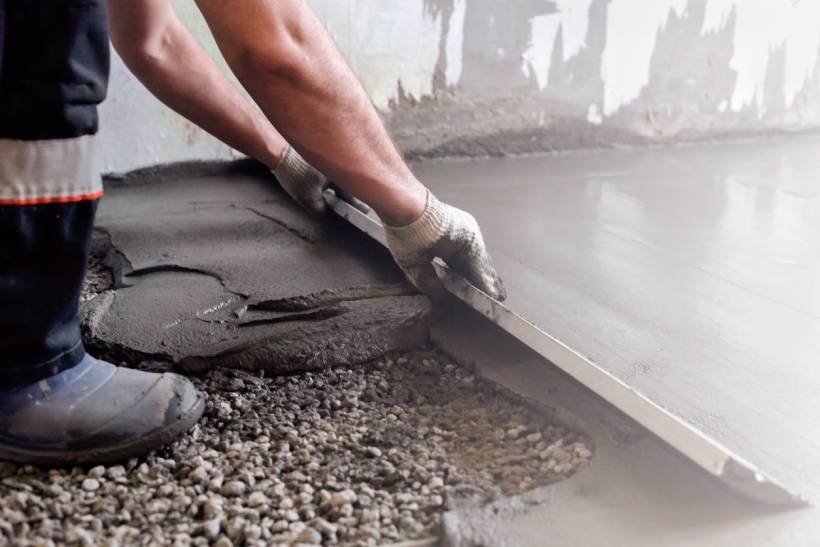 Levelling wet cement floor. (Source: iStock)
Levelling wet cement floor. (Source: iStock)
Lime mortar is essential for building restoration, particularly in preserving historic masonry and historic bricks. Its breathability and flexibility make it ideal for repointing and maintaining the structural integrity of older buildings, preventing moisture retention and cracking. Historic lime mortar is also preferred for its ability to maintain the original character of heritage structures.
In contrast, cement mortar is preferred for modern construction projects due to its strength and quick-setting properties. Building contractors widely use cement mortar for load-bearing applications like walls, foundations, and reinforced concrete, which makes it indispensable for urban and industrial builds. However, its rigidity and lack of breathability limit its suitability for restoring traditional structures.
In terms of cost
Lime mortar tends to have higher material costs due to its labor-intensive production process and the premium price of specific lime types, such as hydraulic lime. It typically costs $15 to $61 per 55 pounds.
Additionally, the application of lime mortar requires specialized skills like brick house painting, which increases labor costs. Its slower setting time also means workers need more time to complete the job. Despite the upfront expense, lime mortar’s flexibility can save on repairs in historic masonry, which offsets costs over time.
Cement mortar, on the other hand, is much more affordable and widely available. It typically costs $25 per 55 pounds. Plus, its faster setting time and simpler application reduce labor expenses, which makes it ideal for modern projects with tight timelines. For large-scale developments or budget-conscious builds, cement mortar is often the go-to choice, though it may result in higher repair expenses in older structures.
Find professional bricklayers and builders on Airtasker today
Making the right choice between lime mortar and cement mortar is crucial for the success and longevity of your project. Whether you’re working on a historic restoration or modern construction, understanding their unique strengths ensures your structure is built to last. From durability to environmental considerations, the right mortar can make all the difference.
Do you need help with bricklaying or other building construction tasks? Airtasker makes it easy to find skilled professionals who can bring your vision to life. Post a task today and connect with experienced workers to get your project started seamlessly.
Learn more about our contributors

Written by Daniel H.
Contributor
Daniel is an experienced writer specialising in topics like construction and renovation, home improvement, DIY projects, and more. When not writing, Daniel enjoys playing online games, discovering new music, and exploring pop culture, which adds a creative spark to his work.
Lime mortar vs Cement mortar
| Lime Mortar | Cement Mortar | |
|---|---|---|
| Strength | Weaker initial strength but strengthens over time |
High compressive strength |
| Flexibility | Highly flexible and accommodates structural shifts; has self-healing properties |
Rigid and prone to cracking under stress |
| Breathability | Excellent breathability prevents moisture buildup and dampness |
Non-breathable and can trap moisture leading to damage in older structures |
| Setting Time | Slow setting; takes days to weeks to fully set |
Quick setting; stabilizes in hours to a day |
| Construction Applications | Essential for historic restoration |
Perfect for modern construction |
| Cost | Higher cost due to labor and material but saves on repairs for heritage |
More affordable, quick application reduces labor costs for modern projects |
FAQs on lime mortar and cement mortar
Lime mortar is ideal for historic buildings or softer materials like terracotta and stone, as it maintains breathability and flexibility. Cement mortar, on the other hand, is best for modern buildings with harder bricks and load-bearing needs.
Yes, lime mortar can be used for aesthetic or sustainable purposes but is less effective on dense, non-porous modern bricks. Cement mortar is better suited for strength and adhesion in modern builds.
Yes, but protect the work area with tarps and ensure the mix isn’t overly wet. Wet weather slows curing and may weaken the mortar if not managed properly.
Find bricklayers, fast
Post a task